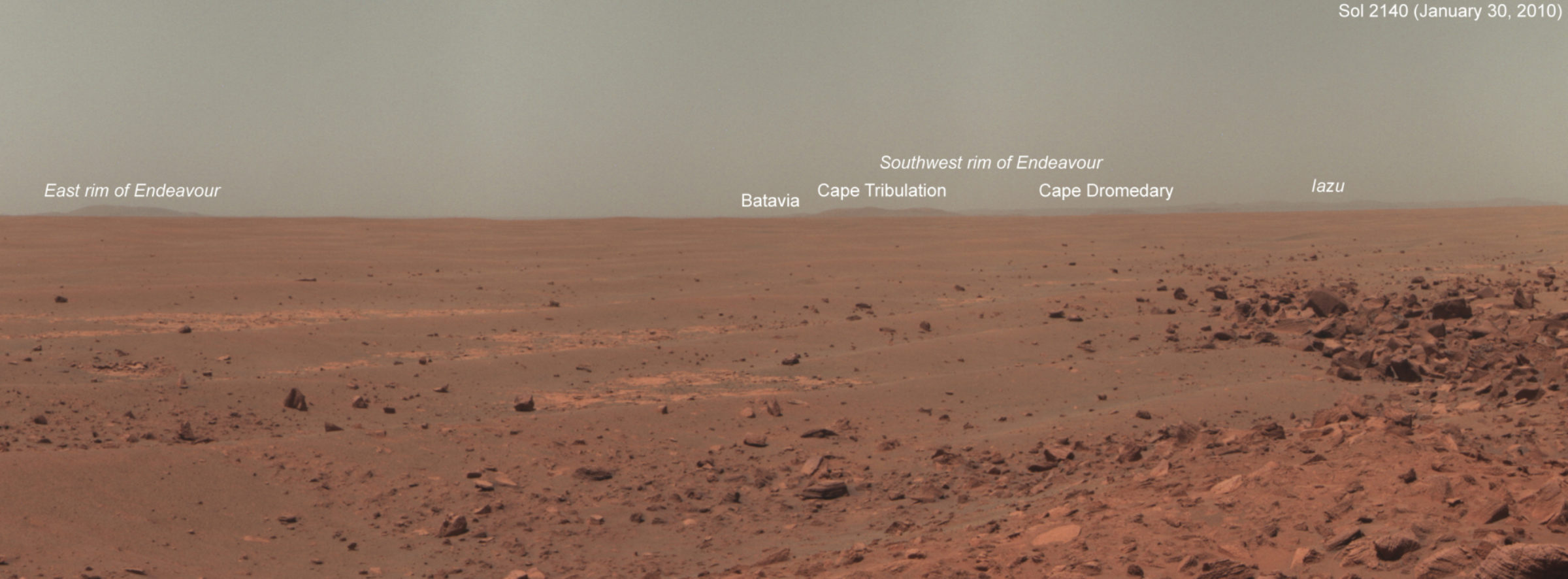Emily Lakdawalla • Aug 25, 2010
A first look at distant hills
Rover fans have been excitedly watching the hills on Opportunity's horizon grow taller and taller as Opportunity rolls toward its destination, Endeavour crater. You can do it, too -- just check the Mars Exploration Rovers raw images website a couple of times a week for new images, or do what I do, use Mike Howard's Midnight Mars Browser software to download all the latest pictures.
But now there's another way to watch the forward view. It's now been more than six months (actually closer to eight) since Opportunity's first clear view of those hills, which was at the end of January, around sol 2140, when Opportunity first pulled up to Concepción crater. Why is six months important? Because six months is how long the rover team has to calibrate and verify their data before sending it all to NASA's Planetary Data System for archiving. Once it's at the PDS, the science data is in the public domain. They archive their data in 90-sol chunks. A few days ago, the rover team sent the PDS the data covering sols 2071 to 2160, which includes the Concepción images. Here's the panoramic view of the distant hills from sol 2140. I've labeled it with the names of visible hills.

If the raw images are available right now, why is it work the work and effort to dig into the PDS for the real science data that is at least six months old? Because the science data is better. It turns out to be especially useful for the first, distant views, because the hills are such pale features against Mars' sky. The conversion to JPEG format that is run on the data before it is posted to the raw images website hides some of the little detail that is visible there, and also gunks up the sharp boundary between the red rock and dust of the foreground and the smooth sky. On top of that, Opportunity's glasses are dirty from her many years on Mars' surface, resulting in dark edges to the raw images. But the crafty rover imaging team has ways of processing out these and other camera artifacts, so that mosaics made from the calibrated data are smooth and beautiful.
Just for comparison's sake, here is a grossly contrast-enhanced version of the view of the near-rim features in that panorama. Enhancing the contrast brings out details in the shapes of the peaks.

And here's a view of the distant hills captured on Friday, August 20, sol 2337, about 100 sols later. This one is composed of raw images, so it is full of JPEG artifacts, but it does reveal that the hills are growing; during the intervening 100 sols, Opportunity roved about 2 kilometers closer to them.

I'm looking forward to checking the PDS once a quarter to pull out Opportunity's best views of the distant hills! The next scheduled archive will become available on November 19.
Support our core enterprises
Your support powers our mission to explore worlds, find life, and defend Earth. You make all the difference when you make a gift. Give today!
Donate

 Explore Worlds
Explore Worlds Find Life
Find Life Defend Earth
Defend Earth

